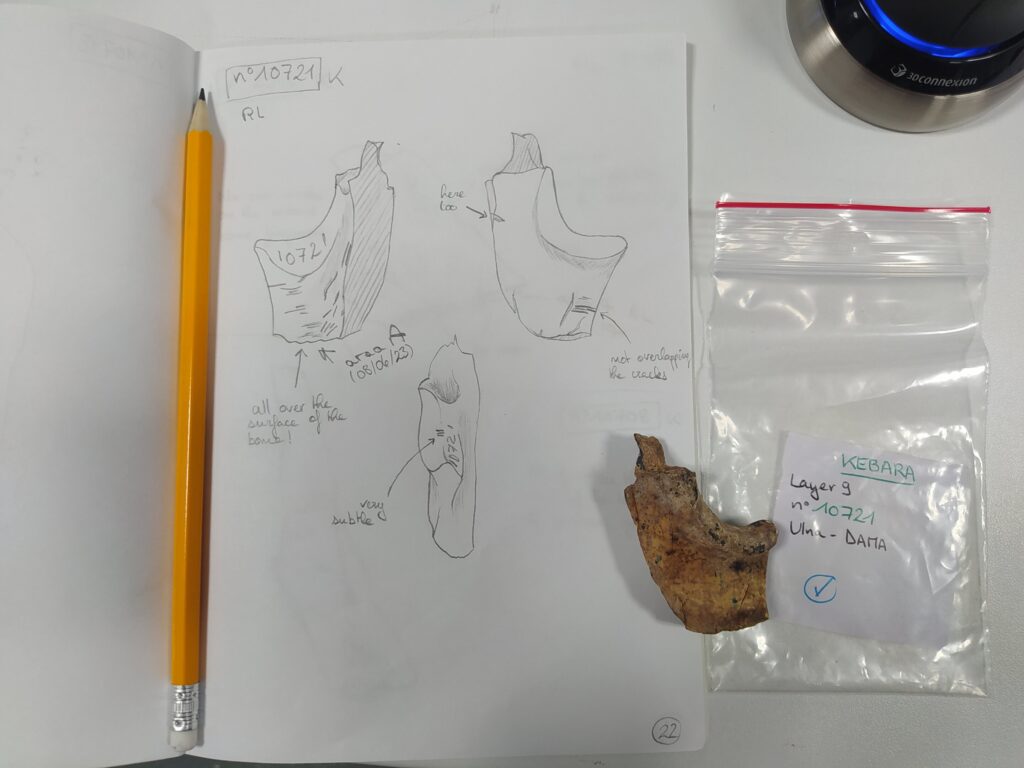
Did Neanderthals have their own family recipes? A groundbreaking study suggests that two groups of Neanderthals, residing in the caves of Amud and Kebara in northern Israel, butchered their food in notably different ways. Despite their proximity and similar resources, these prehistoric humans developed distinct butchery techniques, hinting at unique local food traditions.
According to Anaëlle Jallon, a Ph.D. candidate at the Hebrew University of Jerusalem and lead author of the study published in Frontiers in Environmental Archaeology, “The subtle differences in cut-mark patterns between Amud and Kebara may reflect local traditions of animal carcass processing.” This revelation suggests that cultural traditions, rather than mere survival tactics, played a significant role in Neanderthal life.
Exploring Neanderthal Butchery Techniques
Amud and Kebara caves, located just 70 kilometers apart, were occupied by Neanderthals during the harsh winters between 50,000 and 60,000 years ago. These groups left behind a rich archaeological record, including burials, stone tools, hearths, and food remains. Both communities relied on the same prey, primarily gazelles and fallow deer, and utilized similar flint tools. However, the methods of butchery differed significantly between the two sites.
At Kebara, Neanderthals appeared to hunt larger prey and transported more substantial kills back to their cave for butchering. In contrast, Amud’s inhabitants seemed to process their prey differently, with 40% of animal bones burned and fragmented, possibly due to cooking or accidental damage. Meanwhile, only 9% of the bones at Kebara were burned, and they were less fragmented, indicating a different cooking method.
Scientific Investigation of Cut Marks
To delve deeper into these differences, scientists examined a sample of cut-marked bones from both sites. These bones were studied both macroscopically and microscopically to record the characteristics of the cut marks. The findings revealed that while the tools used were similar, the cut marks at Amud were more densely packed and less linear compared to those at Kebara.
“These two sites give us a unique opportunity to explore whether Neanderthal butchery techniques were standardized,” explained Jallon. “If butchery techniques varied between sites or time periods, this would imply that factors such as cultural traditions, cooking preferences, or social organization influenced even subsistence-related activities such as butchering.”
Interpreting the Findings
The researchers considered several explanations for these distinct patterns. It was initially thought that the differences might be due to varying prey species or bone types. However, even when examining similar bones from small ungulates at both sites, the same cut-mark differences persisted. This led to the conclusion that the variations were due to deliberate butchery choices made by each group.
One hypothesis is that the Neanderthals at Amud might have treated their meat differently before butchering, possibly drying it or allowing it to decompose slightly, akin to modern-day meat preparation techniques. This would account for the more intense and less linear cut marks. Another possibility is that differences in group organization, such as the number of butchers working on a kill, influenced the butchery patterns.
Future Research Directions
While these findings provide fascinating insights into Neanderthal life, more research is needed to fully understand the implications. As Jallon noted, “There are some limitations to consider. The bone fragments are sometimes too small to provide a complete picture of the butchery marks left on the carcass. While we have made efforts to correct for biases caused by fragmentation, this may limit our ability to fully interpret the data.”
“Future studies, including more experimental work and comparative analyses, will be crucial for addressing these uncertainties—and maybe one day reconstructing Neanderthals’ recipes,” Jallon added.
The study, titled “Cut from the same cloth? Comparing Neanderthal processing of faunal resources at Amud and Kebara caves (Israel) through cutmarks analyses,” is published in Frontiers in Environmental Archaeology (2025). DOI: 10.3389/fearc.2025.1575572
This research not only sheds light on the daily lives of Neanderthals but also opens new avenues for understanding the cultural and social dynamics of our ancient relatives.







